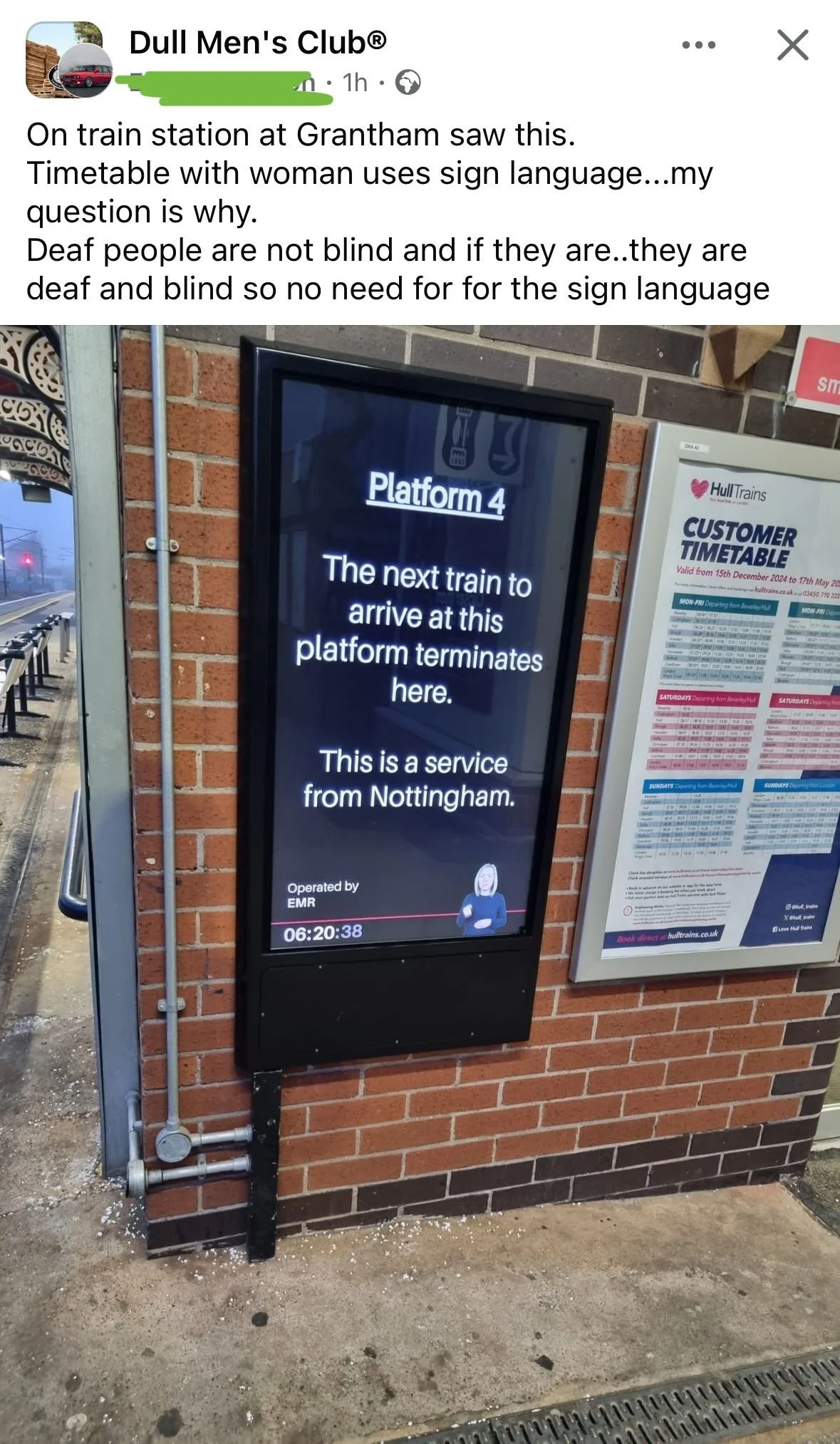Why you should implement sign language alongside text
I came across this in a Facebook group, where someone shared a photo from Grantham Station in England. The digital display includes British Sign Language (BSL) interpretation alongside the text—an amazing example of inclusive design in public transport!
Some might wonder—why add sign language if deaf people can see? But this is actually a fantastic accessibility feature!
Here’s why:
✅ BSL is a first language for many deaf people. English is often a second language, and reading complex text quickly isn’t always easy. Seeing information in their primary language makes a huge difference.
✅ Not all deaf individuals have strong literacy skills. Just like the rest of the community, some people in the Deaf community may struggle with written English due to educational barriers. Providing information in BSL ensures they’re not left out.
✅ Inclusive design benefits everyone. Multi-modal communication—text, visuals, and sign language—helps create a more accessible world, supporting different learning styles and cognitive abilities. And it creates awareness.
In the UK, accessibility isn’t just a nice-to-have—it’s a legal requirement under the Equality Act 2010 and transport accessibility policies. Seeing public transport embrace these principles is a huge win!
Unfortunately, they didn’t add a banana for scale 🍌🤭
The photo of the digital display that includes sign language is posted in a group called Dull Men’s Club. The name of the poster is crossed off. The comment reads:
On train station at Grantham saw this.
Timetable with woman uses sign language…my question is why.
Deaf people are not blind and if they are..they are deaf and blind so no need for for the sign language
